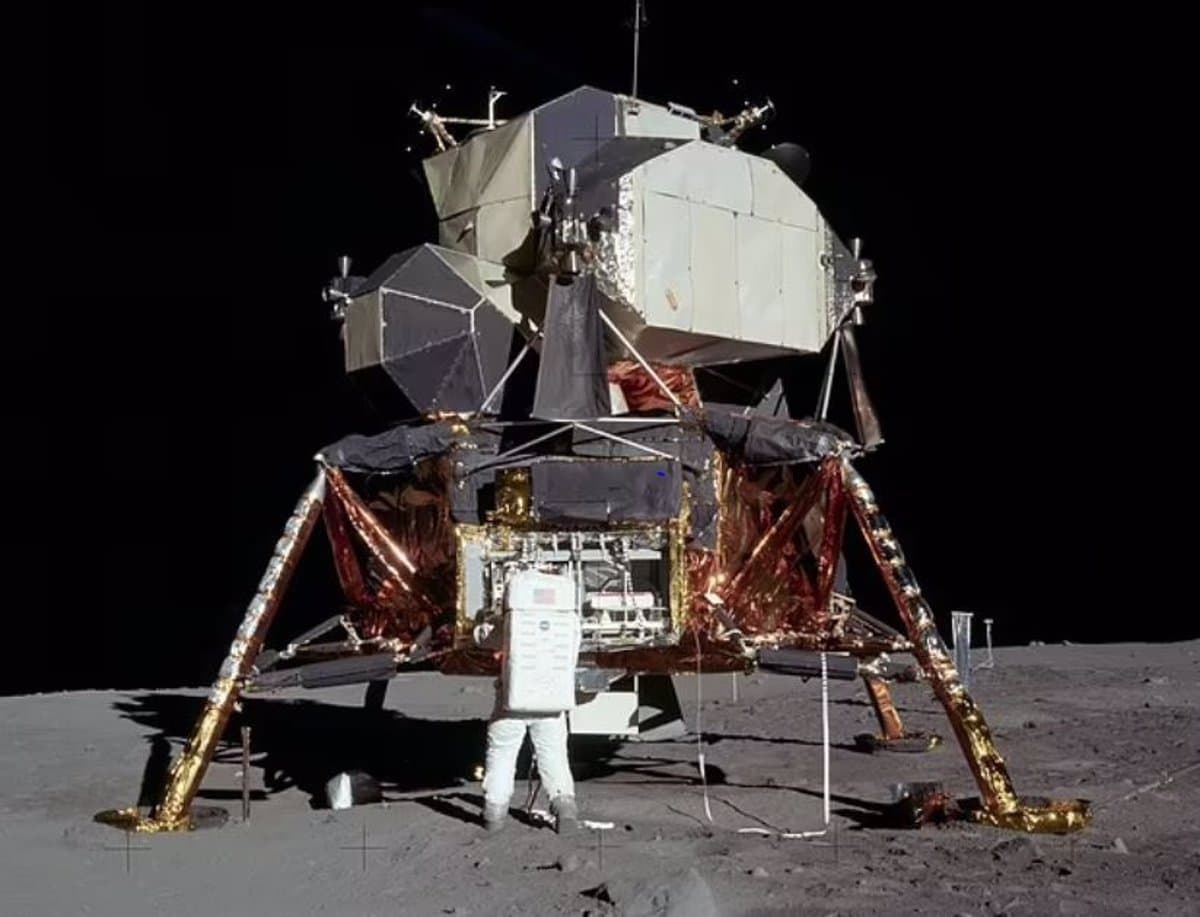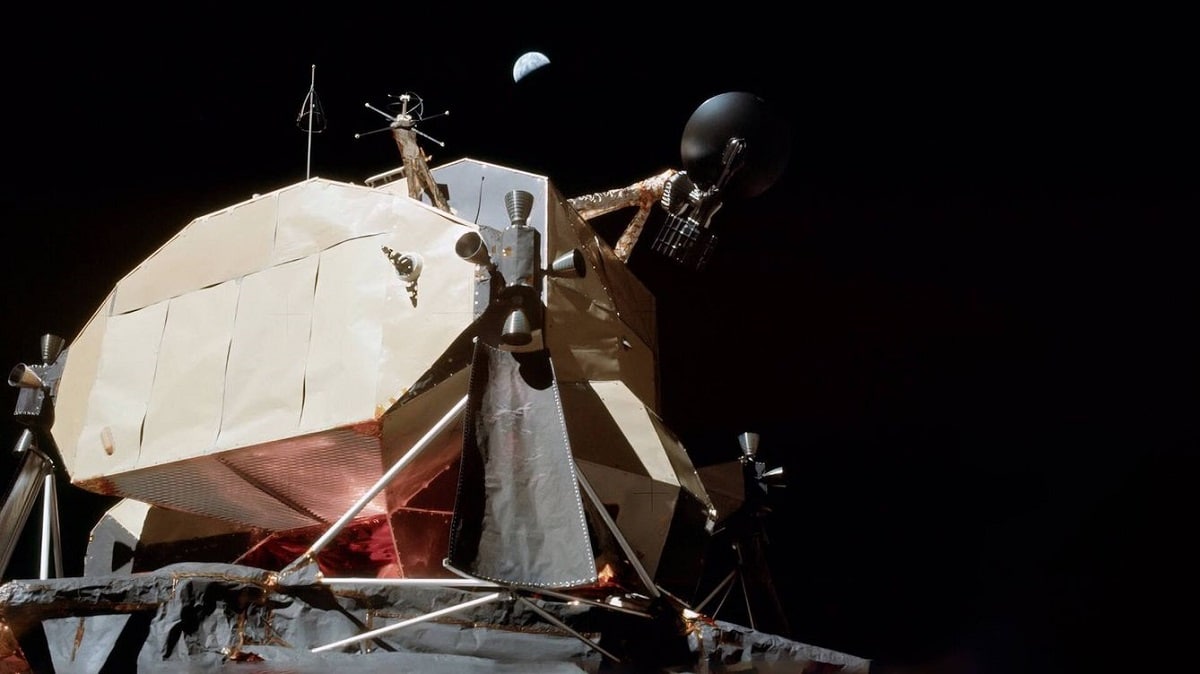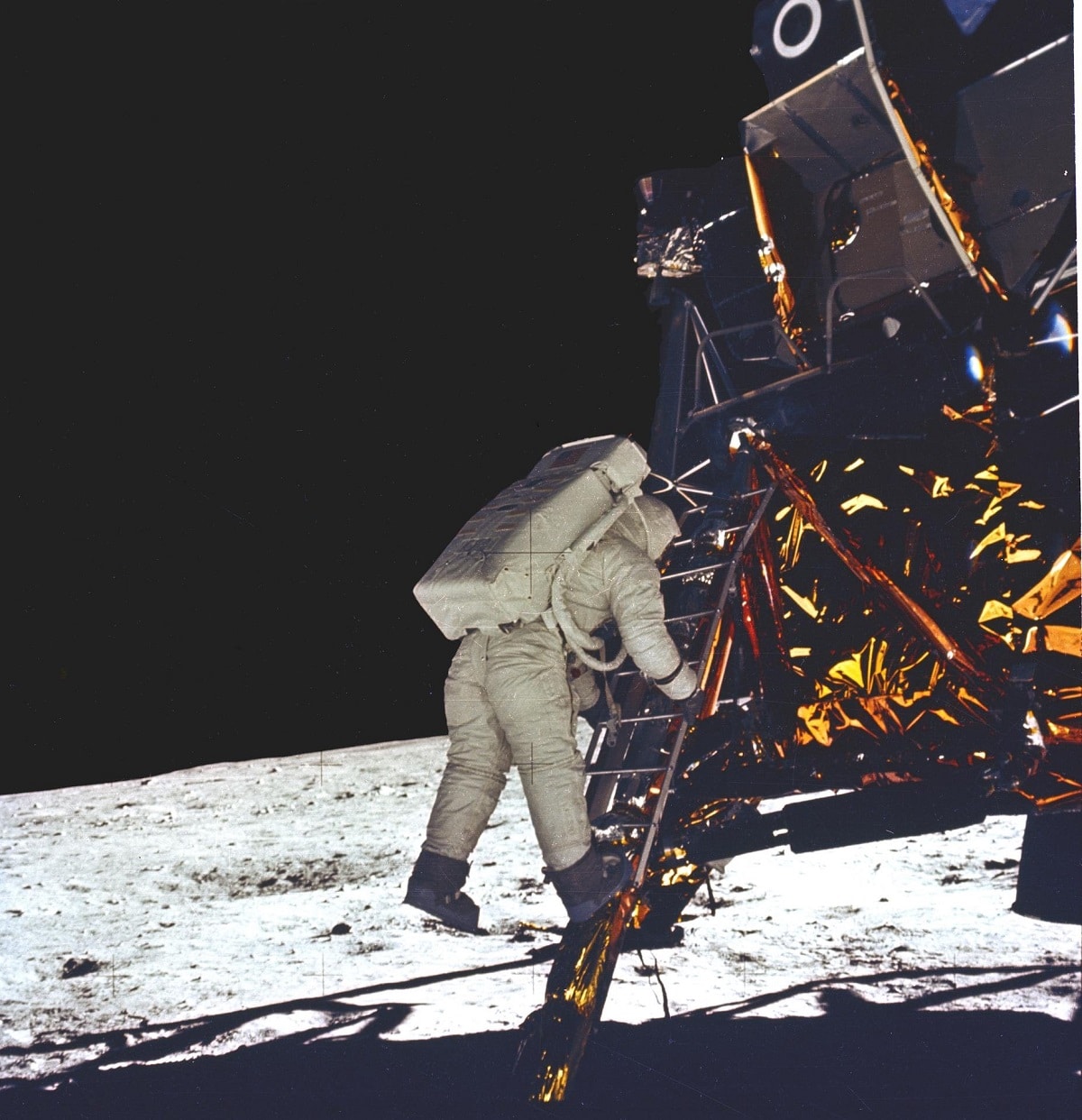
The arrival of man on the moon was a historic milestone for all humanity. It was carried out thanks to the lunar module of the Apollo 11 spacecraft. lunar module it took characteristics that supported the journey from our planet to our satellite.
In this article we are going to tell you about the characteristics of the Apollo 11 lunar module, how it was built and more details about the trip.
Characteristics of the Lunar Module of the Apollo 11 spacecraft

The Apollo 11 Lunar Module was the spacecraft that allowed Neil Armstrong and Edwin "Buzz" Aldrin to descend to the surface of the Moon in 1969. The Lunar Module, aka "Eagle", was designed to fulfill a critical task: getting astronauts from lunar orbit to the surface of the Moon and then back to the command spacecraft.
This module consisted of two main parts: the descent module and the ascent module. The lander was the section of the lunar module that landed on the lunar surface. It had a conical shape and was equipped with four landing legs that automatically deployed before landing. It also featured a ramp that folded out from the front door so astronauts could get out and walk on the lunar surface.
On the other hand, the ascent module was the section of the lunar module that separated from the descent module to take the astronauts back to the command spacecraft. It was shaped like a cylinder and equipped with an ascent motor that provided the propulsion needed to lift off from the Moon and rendezvous with the command spacecraft in lunar orbit.
The Lunar Module was designed to be as light as possible, but also strong enough to withstand the harsh lunar environment. It was constructed primarily of aluminum and titanium alloys, and the cabin walls were covered with a layer of thermal insulation to protect astronauts from extreme heat and cold.
One of the most important features of the lunar module it was its navigation and guidance system, which allowed astronauts to land precisely at a specific location on the lunar surface. The system used a combination of radar and computers to calculate the lunar module's speed, altitude, and position relative to the lunar surface.
Origin of the lunar module

When was planned to conquer the Moon, different systems were devised to take humans to our natural satellite and return to Earth. The chosen one was for two people to disembark with a lunar landing module, the lower part of which was designed to act as a launch pad at the exit.
In considering approaches to lunar orbital docking, Langley Research Center engineers looked at three basic models of lunar modules. The three models that quickly took shape were called "Simple", "Economic" and "Luxury".
The "simple" version is envisioned as little more than an open-top vehicle capable of supporting a person in a spacesuit for hours who could weigh up to two tons. Depending on the type of propellant used, the "economy" model, designed to accommodate two men, is two to three times heavier than previous models.
Ultimately, the method considered to be the safest was the "deluxe" method of task preselection. At the proposal stage, technicians at Grumman, which won the architectural competition, envisioned the lunar lander as an object containing 12 tons of propellant surrounded by a 4-ton "clockwork structure" encased in thick walls of aluminum. It looked like an eggshell.
Had one height of 7 meters and, with the legs extended, a diameter of 9,45 m. It was made up of a million parts, mostly small transistors, 40 miles of cable, two radios, two radar devices, six electric motors, a computer, and a set of equipment for scientific experiments on the moon.
All this had to be distributed in two main units, called ups and downs, each equipped with its own rocket.
descent module

It was the part of the Apollo 11 spacecraft that touched our satellite. It was built with aluminum alloy, octagonal in shape, four padded legs and contained batteries, oxygen reserves and scientific equipment to land and remain on the lunar surface. It was 3,22 m tall including the legs and 4,29 m in diameter excluding the legs.
Extensions at the ends of the two main spars provided support for the landing gear. All struts featured shock absorbers made up of deformable honeycomb elements to absorb landing shocks.
The first landing gear extended below the forward hatch and was attached to a ladder that astronauts could use to access the lunar surface and climb up. Most of the weight and space for the descent stage was allocated to the four propellant tanks and the descent rocket, capable of exerting 4.500 kg of thrust.
During the approach mission, the descent engine was turned on to initiate the fall of the lunar module from a height of 110 km. At about 15.000 meters above the surface, it had to restart during another braking maneuver to keep the lunar module descending and slowing until it touched the surface slightly.
ascent module
It was the upper half of the lunar module, with the command center, crew module, and rockets that were used to launch vehicles from the lunar surface. It had a height of 3,75 m and was divided into three sections: the crew compartment, center section and equipment area.
The crew module occupied the front of the elevator, and the astronauts could look out of two triangular windows. The crew members did not have seats, so they had to stand up, restrained with straps that were not too narrow so as not to hurt them.
Beneath the pavement in the center section were rising rockets, designed to generate around 1.600 kilograms of thrust and capable of igniting and re-igniting. This was because the moon's weak gravity, one-sixth that of Earth, it does not require the generation of strong propulsive energy to propel the ascent phase.
I hope that with this information you can learn more about the lunar module of the Apollo 11 spacecraft and its characteristics.